SPL Lighting Low pressure sodium-vapour lamps
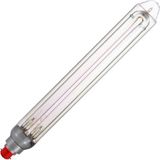
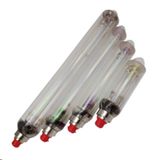
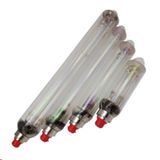
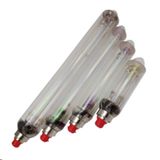

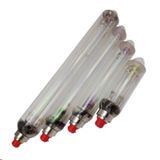
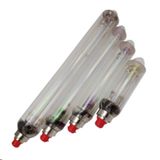
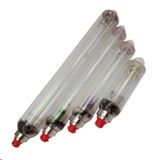
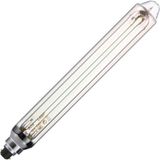
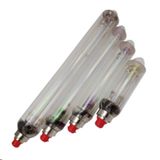
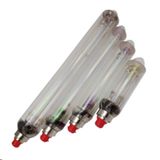
spl lighting low pressure sodium lamps characteristics and formats
These are classic SOX-type sources built for sheer efficacy and long reach. Power classes generally 18/35/55/90/135/180 W; outer envelopes insulate a U-tube discharge vessel so sodium stays at the correct vapour pressure. The spectrum is essentially a single line at ~589 nm, which is why these lamps hit 150–200+ lm/W while rendering colour poorly (CRI ≈ 0). Warm-up to full flux takes ~6–10 min; hot restrike needs a cool-down unless the gear provides a boosted ignition sequence. Typical service life sits in the 12–18 k h band to median failure with lumen maintenance that stays unusually flat compared with other HID families.
spl lighting lps street lighting use cases and optics
Road, tunnel, and perimeter runs benefit from the tight luminous band: glare control is straightforward and long pole spacing is achievable. Elliptical or tubular bulbs seat in roadway reflectors with asymmetric distributions; high-watt bodies (90–180 W) feed deep cut-off optics for masts and viaducts, while 18–55 W units suit narrow streets and footpaths. In cold climates, output remains near nameplate—low-pressure sodium is largely immune to winter droop, which keeps uniformity predictable on long spans.
spl lighting sodium vapour lamps gear and wiring
Control gear is specific: a magnetic ballast (constant-watt or autotransformer type) matched to lamp wattage, plus an ignitor with the correct open-circuit voltage and timing. Terminations use bayonet-style high-temperature caps on lower ratings and heavy duty terminals on the largest frames; always check holder temperature class and creepage around the neck. Power factor correction capacitors are included in many kits so the feeder doesn’t carry needless reactive current. Dimming is rarely applied—run/standby switching at circuit level is the normal energy strategy.
Series structure and lamp options
- Standard LPS: baseline efficacy, tubular or elliptical outer bulbs, longest proven field history.
- Eco LPS: reduced ballast losses and optimised amalgam charge for slightly higher lm/W on the same watt class.
- Protective-glass versions: shatter-containment outer bulbs for fixtures without front glass.
- Tunnel/bridge spec: vibration-tolerant supports and reinforced caps for high-shock sites.
Choose beam by the luminaire, not the lamp—the reflector is doing the optical work here. Specify the watt class and cap code to match the holder and ballast set.
Performance figures, compliance, and handling
Expect nominal efficacies of ~180 lm/W on mid-sizes (55–90 W) and ~150–170 lm/W at the extremes. Lamp voltage and current are published per series; size the ballast to those values rather than only the watt stamp. Safety and performance reference IEC 62035 (discharge lamp safety) and IEC 60662 (sodium lamp characteristics). Outer bulbs run hot—holder and gasket materials must be heat-rated, and clearances around the neck respected. Do not fingerprint the inner discharge tube during service; oils create local hot spots.
Integration and retrofit notes
Where LED conversion is staged, these lamps drop into existing sodium optics without photometric re-work—a reason some operators keep them for a final maintenance cycle before a full head swap. For EM-only grids, label ignitor location (in-gear vs in-head) to speed night-shift changes. On steel poles, publish earth continuity checks—older sockets sometimes lose bonding when painted. If neutral-sharing is used on long runs, verify inrush and ignitor behaviour at reconnection to avoid nuisance trips after outages.
Application wording you’ll see on drawings
Specifiers often call the golden line spl lighting yellow sodium lamps when they want maximum reach and fog penetration. Long-span highways and bypasses show up as spl lighting roadway lighting lamps; pedestrian zones get lower watt nodes with tighter cut-off. Energy tenders may write spl lighting energy efficient sodium lights to emphasise lm/W over colour—keep the CRI note explicit so users understand the trade-off. For replacement listings that simply ask for spl lighting street light bulbs, pin watt class, cap type, and required gear (ballast/ignitor) on the same line to avoid mismatches.
Ordering checklist (concise)
- Wattage class (18/35/55/90/135/180 W) and voltage/current from the datasheet.
- Cap/holder type and temperature class.
- Gear set: ballast type and ignitor spec (OCV/timing); PF correction if separate.
- Outer bulb form (tubular/elliptical) and protection (standard/protective glass).
- Environmental notes: vibration site, ambient range, and re-strike policy.
These are the core of spl lighting high intensity discharge lights where reach, uniformity, and predictable optics outrank colour rendering; treat spl lighting industrial discharge lamps the same way—by locking the watt class and gear pairing before you order.